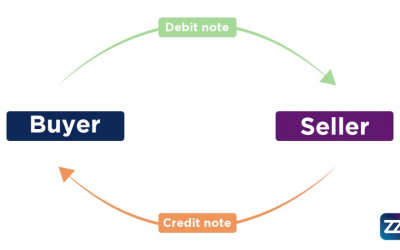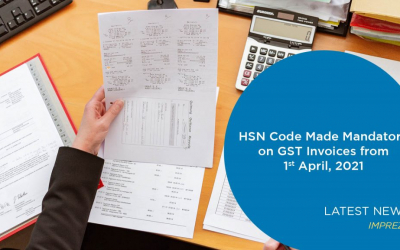
The Goods and Services Tax (GST) is an indirect tax regime that has replaced several indirect taxes in India. The GST laws and rules on goods and services were approved in the Parliament on March 29th, 2017, and came into force on July 1st, 2017. Any supply of goods or services is subject to GST. It is a comprehensive, multi-stage, destination-based tax that is applied to every value addition.
Under the GST system, the tax is applied at each point of sale. The central goods and services tax and the state goods and services tax apply for sales within the country. All interstate sales are subject to an integrated goods and services tax. This article is part of our basic GST guide; Part-2 briefly explains various Revised Rules under GST.
Revised Invoice Rules
Revised tax invoices under GST must be modified under the specified GST rules and format. While providing invoices for the supply of services or goods, suppliers might want to modify or revise the tax invoice. In such cases, a supplier must adhere to the following GST tax laws while invoicing.
Revised Tax Invoice under GST – Format
A revised tax invoice must contain the following specifications as per the GST invoice format in India:
- The invoice has to be titled “Revised Invoice.”
- GSTIN, name, and address of the supplier.
- Nature of the invoice.
- A consecutive serial number not exceeding 16 characters.
- The date of issue of the tax invoice.
- GSTIN, UIN, name, and address of the recipient (if registered).
- The recipient’s name, address, and delivery details, including the state’s name and code (For non-registered recipient).
- The date and a serial number of the corresponding tax invoice (applicable to supply invoices only).
- The value of a taxable supply of goods or services, the tax rate, the amount of tax credited or deducted to the recipient.
- A signature or digital signature of the supplier or authorized representative.
Supplementary Invoice
According to the GST invoice rules, if the taxable value or tax amount charged in a tax invoice is less than the payable amount or value of supply, taxpayers can issue either a credit or debit note. Credit or debit notes must be titled “Supplementary Invoice.” Later, supplementary invoices must be included in the monthly returns, during which debit or credit notes were issued, to adjust tax liabilities.
Revised Payment Rules
CBEC released revised payment rules; it provides the methodical aspects relating to the following:
Electronic Tax Liability Ledger
As specified in subsection (7) of section 49, the electronic tax liability ledger must be kept in FORM GST PMT-01. It applies to all taxpayers liable to pay interests, fines, late fees, tax, or any other taxable amount on the common portal. All the tax payable amount will be debited to the ledger, as mentioned above.
Electronic Credit Ledger
The electronic credit ledger should be maintained in FORM GST PMT-02. It applies to the taxpayers eligible for the ITC (input tax credit) under the GST ACT. Every ITC claim will be added to a credit ledger as per the GST law.
Electronic Cash Ledger
The electronic cash ledger should be maintained under Subsection (1) of Section 49 in FORM GST PMT-05. It applies to taxpayers liable to pay taxes, late fees, fines, interests, and other payable amounts on the common portal for the deposited amount credited and debited towards the payables, as mentioned above.
Identification Number for Each Transaction
The portal generates a Unique Identification Number (UIN) for each debit or credit reported in the e-cash or credit ledger. The UIN concerning any liability discharge is indicated in the corresponding entry of the tax liability ledger.
Revised Refund Rules
Revised refund rules under GST specifies the laws to be followed by taxpayers to request a refund of tax, interests, fine fees, or any other amount. Taxpayers, except for those that fall under section 55, requesting the refund of tax and any aforementioned additional amount must submit their request through FORM GST RFD-01. They can upload the form either directly on the GST portal or through the facilitation center, as notified by the commissioner.
Revised Registration Rules
Taxpayers who are subject to registration under subsection (1) of section 25 and subsection (3) of section 25 must provide their PAN (Permanent Account Number), mobile number, e-mail address, and state or union territory information before registration in FORM GST REG-01 on the common portal. They can either upload these particulars directly or through the facilitation center.
The revised registration rule does not apply for the non-resident taxpayers, taxpayers providing online information and data access to a person abroad under section 14 of Integrated Goods and Services Tax (IGST), taxpayers subject to deduct taxes under section 51, and taxpayers subject to collection of taxes under section 52. Taxpayers from special economic zones or SEZ developers must submit a separate registration application as a business sector distinct from other units outside their zone.
Revised Return Rules
GST has integrated various returns under a single tax calculation system. However, GST entails categories of return filing. Any taxpayer has to adhere to these revised return rules to avail ITC.
Outward Supplies
Taxpayers must provide details of outward supply of goods and services, or both, under section 37. These details must be furnished in FORM GSTR-1. Taxpayers must file the form electronically on the portal as per the new GST law. They can either file returns directly or through the facilitation center.
Inward Supplies
Registered persons are required to provide details of inward supply of goods and services, or both, received during a tax period as per subsection (2) of section 38. They are supposed to furnish the details based on Part A, Part B, Part C, and Part D of the GSTR-2A FORM.
Taxpayers must furnish the details specified in subsection (1) of the previous section and submit it through FORM GSTR-2 electronically through the common portal. They can either upload it directly or through the facilitation center. Once taxpayers mention the inward supply details mentioned above, other information can be uploaded under subsection (2) of section 38.
Monthly Return
Taxpayers who are not distributors, non-resident taxable individuals, businesses taxable under section 10 or section 51 must file a specific return under subsection (1) of section 39 in the FORM GSTR-3 electronically through the common portal. They can either upload it directly or through the facilitation center.
Quarterly Return
Taxpayers subject to pay tax under section 10, after the amendment of details in the FORM GSTR-4A, must file quarterly returns on the FORM GSTR-4 electronically through the common portal. They can either upload it directly or through the facilitation center.
Revised GST Laws and Rules for Non-Resident Taxpayers
Non-resident taxpayers must submit FORM GSTR-5 electronically through the common portal. They can either upload it directly or through the facilitation center. They must also include the details of overseas supplies received, interests, fines, late fees, or any other amount payable under GST rules and regulations. Taxpayers must submit the form 20 days after the end of the taxation period or within seven days before the registration validity period ends (whichever applicable).
Revised GST Laws and Rules for Input Service Distributors
Registered Input Service Distributors must provide information on services, amend necessary details submitted in the FORM GSTR-6A (if any) and submit the FORM GSTR-6. They must also include tax invoices on which credits are collected and issued under section 20. They can either upload it directly or through the facilitation center.
Revised GST Laws and Rules for Taxpayers Required to Deduct Tax at Sources
Taxpayers required to deduct taxes at the source under Section 51 must file returns through the FORM GSTR-7 electronically through the common portal. They can either upload it directly or through the facilitation center.
Revised GST Laws and Rules for E-Commerce Operators
E-commerce operators in India collect taxes through sources under section 52; these taxpayers must submit statements in the FORM GSTR-8 electronically through the common portal. They can either upload it directly or through the facilitation center. The form must also contain details of supplies carried out through these operators and the tax amount collected under subsection (1) of section 52.
Conclusion
The new GST laws and rules were implemented earlier this year. Documents related to GST rules have been shared by the GST Council and CBEC authorities. These documents deal with taxable events under the new GST laws and rules. GST Rules 2020 aims to simplify the Revised GST rules, GST returns filling, and more.
Imprezz is fully-featured, integrated accounting software that helps taxpayers and businesses comply with GST rules. With the Imprezz billing and invoicing system, you can create quotes, invoices, proforma invoices, sales, and purchases adjustments and send GST returns based on the GST billing rules.
We offer a 14-days free trial software program for small businesses, freelancers, and accountants in India. You don’t need to be an accounting expert to manage your finances at Imprezz. Log in to get started!


